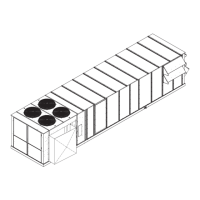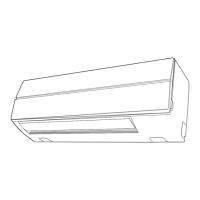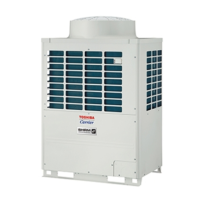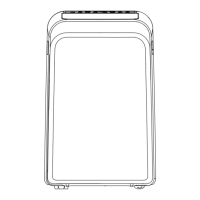Do you have a question about the Carrier Moduline 37HS Series and is the answer not in the manual?
Identifies units by comparing nameplate with model number nomenclature for correct unit reception.
Guidelines for preventing construction debris entry and protecting diffusers during installation.
Covers unit and ceiling coordination, unit-to-unit connections, and unit suspension methods.
Details installation procedures for T-bar, tegular, and nonaccessible ceilings.
Covers general control arrangements, operating sequences, and control installation.
Outlines principles of operation, preliminary system check, and initial start-up steps.
Explains how to gain access to controls and provides troubleshooting guidance for common issues.
Explains the model number nomenclature for 37HS units, detailing unit size, plenum, and diffuser types.
Avoid debris entry, protect diffusers, do not operate fan without filters, and caution on stacking units.
Describes suitability for various ceiling types and installation options like single units or air series.
Lists available diffuser lengths for different plenum sizes and diffuser types.
Provides dimensional data for 37HS2 units, including plenum size and connection details.
Lists available diffuser lengths for 37HS2 units based on ceiling T-bar style and width.
Provides dimensional data for 37HS4 units, including plenum size and connection details.
Lists available diffuser lengths for 37HS4 units based on ceiling T-bar style and width.
Illustrates 2-way blow, one-way blow, and 3-slot extruded aluminum diffusers.
Shows steel and aluminum removable diffuser options for 37HS units.
Details diffuser lengths for 37HS1 and HS2 based on ceiling T-bar style and width.
Details diffuser lengths for 37HS4 based on ceiling T-bar style and width.
Lists available lengths for accessory return-air diffusers for 37HS1, HS2, and HS4 models.
Provides details and available lengths for accessory dummy diffusers for 37HS units.
Lists adapter cap and diffuser baffle part numbers and quantities.
Details T-bar mounting brackets for 37HS1, HS2, and HS4 units, including tegular and T-bar types.
Lists end trim pieces and alignment channels for continuous run and accessible ceilings.
Specifies mounting brackets for accessory return air and dummy diffusers.
Lists filler trim pieces and various tubing packages for control systems.
Details hanger mounting brackets used for wire-hung units in accessible ceilings.
Emphasizes coordinating unit installation with ceiling construction for optimal results.
Explains unit suspension using T-bar supports and accessory hanger mounting brackets.
Provides step-by-step instructions for installing 37HS units in T-bar ceilings.
Illustrates T-bar mounting bracket details and locking wedges for secure installation.
Describes installation of accessory diffusers using mounting brackets.
Details wire-hung installation, including using hanger wires and T-bar mounting brackets for alignment.
Explains continuous run installations using alignment channels and filler trim pieces.
Describes tegular ceiling construction and its advantages over standard T-bar ceilings.
Details how 37HS terminals are installed in tegular ceilings, including cutting tiles and mounting brackets.
Shows typical tegular ceiling installation, including T-bar runners, acoustical panels, and end trim.
Covers plaster and concealed spline ceilings requiring removable diffusers for access.
Describes plaster ceiling installation, including hanger brackets, wire mesh, and plaster frames.
Illustrates installation details for Moduline units in plaster ceilings with end trim.
Provides dimensions for plaster ceiling openings for 37HS removable diffuser units.
Explains concealed spline ceiling construction and its security features.
Details how 37HS units integrate into concealed spline systems, noting removable diffusers and wire suspension.
Shows Moduline units installed in plaster ceilings with light fixtures and diffuser details.
Illustrates cross-section and suspension details for concealed spline ceilings with 37HS terminals.
Shows a top view of a concealed spline ceiling with 37HS units and associated components.
Shows a bottom view of a concealed spline ceiling with 37HS units, diffusers, and end trim.
Explains system-powered controls for volume and temperature without external energy.
Lists available control combinations for 37HS Moduline air terminals and required packages.
Shows the standard control arrangement for a 37HS unit, including diffuser thermostat and volume controller.
Illustrates the installation of variable air volume system-powered controls on a unit.
Shows a single master unit installation with controls installed and bellows connection capped.
Illustrates a master unit connected to one slave unit via flex connection and tubing.
Depicts a master unit connected to three slave units using 1/4-in. FR tubing connections.
Explains how system-powered cooling works, including airflow adjustment and thermostat control.
Describes the warm-up sequence, influenced by space temperature and immersion switch.
Details how 37HS provides heating and cooling with a changeover switch and thermostat.
Lists control packages and connection arrangements for constant volume cooling.
Shows control packages and arrangements for variable volume cooling with a diffuser thermostat.
Details control packages and arrangements for variable volume cooling with a wall thermostat.
Control packages and arrangements for VAV cooling warm-up with a wall thermostat.
Control packages and arrangements for VAV heating/cooling changeover with a wall thermostat.
Control packages and arrangements for VAV cooling with electric warm-up via wall thermostat.
Control packages and arrangements for VAV heating/cooling electric changeover.
Control packages and arrangements for VAV cooling with diffuser thermostat and electric interlock.
Control packages and arrangements for VAV heating with a wall thermostat.
Control packages and arrangements for VAV cooling using pneumatic pilot valves for heating/cooling.
Control packages and arrangements for VAV cooling with pneumatic wall thermostats.
Control packages and arrangements for VAV cooling with diffuser thermostat and pneumatic switch.
General guidance for installing controls before or after unit placement, referencing control packages.
Step-by-step instructions for installing controls in constant volume applications.
Details on preparing and installing the control filter and manifold connections.
Detailed steps for installing controls on constant volume units, including baffle and filter installation.
Instructions on removing the shim from the volume controller for proper installation.
Steps for installing VAV control packages, including thermostat and aspirator connections.
Describes the specific assembly method for 37HS1 VAV controls due to limited space.
Details how to connect interconnecting tubing for master and slave units in air series.
Lists VAV control packages, including components like volume controllers and diffusers.
Lists constant volume control packages, including diffuser baffles and filters.
Identifies control packages for warm-up and changeover functions.
Lists part numbers and package numbers for various system-powered wall-mounted thermostats.
Provides package numbers for electric warm-up/changeover valves based on voltage.
Identifies control packages for electric interlock and pneumatic thermostats.
Lists control packages for pneumatic pilot valves and warm-up/fire switches.
Details maximum airflow settings for different unit sizes and lever positions.
Lists maximum CFM through the inlet collar for single or multiple units in an air series.
Shows the maximum number of units that can be controlled by one controller in an air series.
Explains how to set the maximum CFM lever on the volume controller for desired airflow.
Details how to set both design maximum and minimum CFM requirements for the controller.
Steps to check control circuits for proper operation under specified conditions.
Explains how units operate normally, how bellows pressure affects closure, and effects of leaks/obstructions.
Describes how constant volume operation is achieved through pressure control and bellows inflation.
Essential checks before starting system, including air handling apparatus and controls.
Procedure to identify obstructions by checking bellows pressure at various points.
Methods to detect leaks in control circuits, bellows connections, and tubing using a Magnehelic gage.
Procedure to check duct pressure on master and slave units using a Magnehelic gage.
Visual guide on checking unit bellows for leaks using a Magnehelic gage and a metal "T".
Identifies causes and corrective actions for room too cold symptoms like incorrect thermostat or volume settings.
Identifies causes and corrective actions for room too warm symptoms like incorrect supply air temperature or duct pressure.
| Brand | Carrier |
|---|---|
| Model | Moduline 37HS Series |
| Category | Air Conditioner |
| Language | English |












